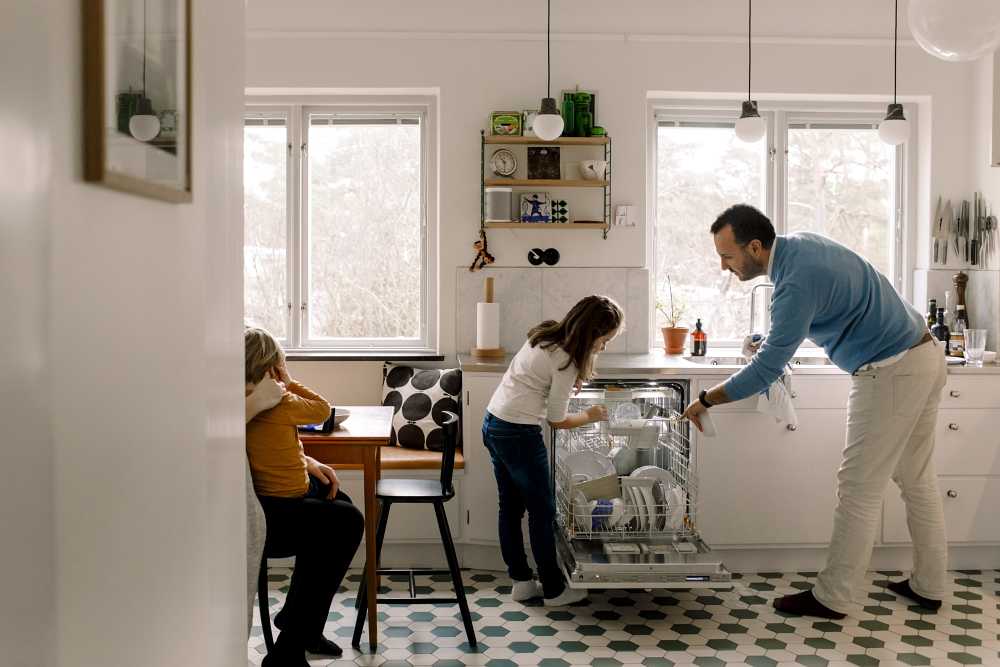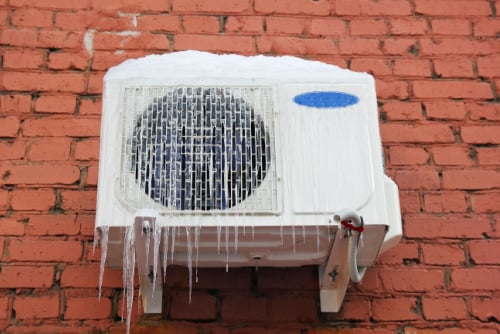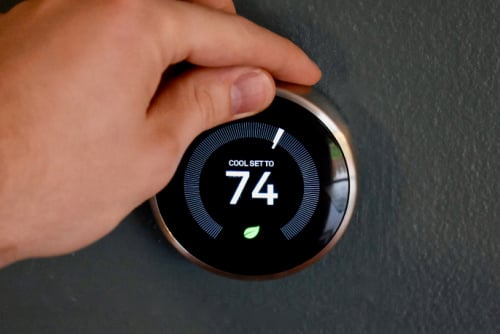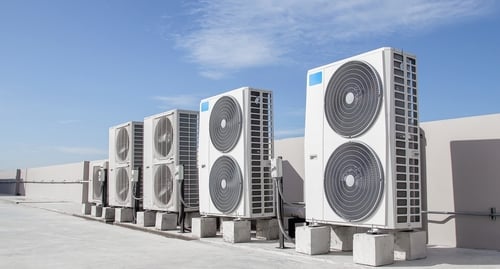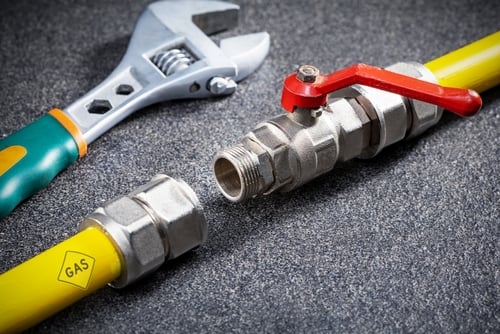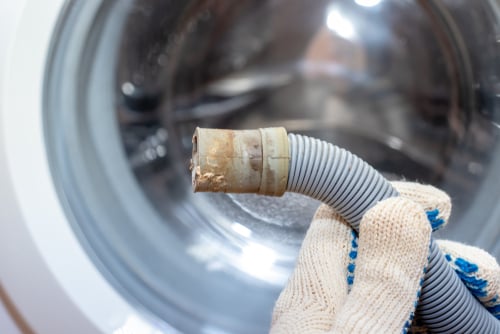As the days grow longer and the temperatures begin to rise, the thought of turning on your air conditioning (A/C) unit might be just around the corner. Regular HVAC maintenance is the cornerstone of a reliable, efficient system that stands the test of time and heat.
Spring HVAC maintenance is a proactive step every homeowner can take to avoid the discomfort of a malfunctioning system when you need it most. From changing filters to inspecting ductwork, we'll walk you through our comprehensive checklist of spring maintenance tasks.
Spring AC Maintenance Checklist
As the backbone of your home's comfort during the warmer months, your HVAC system deserves a thorough spring checkup. This checklist is designed to help you tackle essential maintenance tasks that keep your system running smoothly, efficiently, and reliably.
Tools You’ll Need
- Screwdriver Set
- Garden Hose
- Digital Thermometer
- Multimeter
- Safety glasses
- Gloves
- Flashlight
- Wet-dry Vacuum
Essential Spring Maintenance Tasks
Dedicate a portion of your day to these fundamental spring A/C maintenance tasks. They’re designed to improve air quality, system efficiency, and should be performed at least annually, before the warmer months season starts.
Level and Clear Surroundings (10 minutes)
Remove any debris or leaves around the outdoor unit. Ensure a minimum of 2 feet for airflow. Check to make sure the unit is level. The compressor works optimally when your air conditioner is level. If it is not level, oil cannot effectively reach all components causing friction and damage over time.
Inspecting Disconnects (10 minutes)
Find the electrical disconnect, usually a metal box mounted near the outdoor unit. Ensure the power is off to the unit by switching off the breaker in your home's electrical panel, then open the disconnect box and visually inspect for signs of wear, corrosion, or loose wires.
Checking and Adjusting the Thermostat (5 minutes)
Turn on your A/C from the thermostat and observe if it starts as expected. If you have a programmable thermostat, set it for different times of the day to save energy. Ensure the thermostat is level; sometimes, being off-level can affect performance. Check thermostat batteries, if required.
Replacing or Cleaning Air Filters (5 minutes)
The air filter is usually found in a slot along the return duct or inside the indoor unit. Turn off the system. Slide out the old filter. Insert a new filter, making sure it’s facing the correct direction (arrows on the filter frame show airflow direction).
Cleaning Coils (30 minutes)
Turn off power to the unit. Use the garden hose with a spray nozzle to gently rinse the coils from the outside. Start at the top and work your way down. Aim to remove any dirt or debris without bending the delicate fins. For indoor units, inspect coil for bio growth and dirt build up.
Detailed Inspection & Care
These tasks delve into your system's health, focusing on components that require attention to detail. They are critical for preventing breakdowns and ensuring your system's optimal performance.
Condensate Line (20 minutes)
Locate the condensate drain line near the indoor cooling coil. Use a wet-dry vacuum to suck out any clogs from the line.
Testing Contactor and Capacitor (15 minutes)
Located in the outdoor unit, the contactor engages the system's electrical connections. With the power off, check for visible signs of pitting or burning. Capacitors are found in the outdoor unit. They need to be tested with the leads off. With power off, and the capacitor discharged*, use a multimeter to test. Ensure they match the specifications on their labels.
*WARNING: Capacitors can store a charge and even with the power off they can cause an electrical shock. Testing a capacitor can be dangerous and is best handled by an expert.
Cleaning and Tightening Electrical Connections (10 minutes)
With the power off, use your screwdriver set to tighten all visible electrical connections in the outdoor unit. Be cautious not to over tighten. To clean, gently brush away any dirt or debris from the electrical components. Inspect for corrosion.
Operational Aspects (15 minutes)
With the system running, observe the start-up and shut-down sequences. Listen for any unusual noises that could indicate problems.
Testing Safety and Limit Switches (15 minutes)
These are usually located in the indoor unit. With the system running, gently press each switch to test its functionality. The system should stop when activated and restart once released.
Something else to consider
The above A/C maintenance tasks will take you approximately 2 hours to complete everything. However, when performed by a Frontdoor Pro it will take about half of that time, plus you know the job will be done right by an HVAC expert!
Signs You need Professional Help
While many maintenance tasks can be performed by homeowners, there are times when it's necessary to seek professional help. Recognizing the signs that indicate your HVAC system requires a professional inspection or repair can save you time, money, and prevent further damage to your system. Here are key indicators that it's time to call in help:
Unusual Noises
Noises, such as banging, hissing, or whistling can indicate loose parts, a refrigerant leak, or other issues requiring expert attention.
Poor Airflow
Weak airflow from your vents can suggest a blockage in your ductwork or issues with the blower motor.
Thermostat Issues
If adjusting your thermostat doesn’t result in the desired temperature or if certain areas of your home are too hot or too cold, there might be a problem with your thermostat or the HVAC system itself.
High Energy Bills
An unexpected rise in your energy bills can indicate your HVAC system is not running as efficiently as it should be.
Frequent Cycling
If your HVAC system is turning on and off more frequently than usual, this could be a sign of an oversized system, a malfunction, or other issues that can strain your system and lead to premature failure.
Ice on the Coils
Ice forming on the A/C coils is a clear indicator of a problem, such as low refrigerant levels, poor airflow, or clogged air filters.
Water Leaks
Any signs of water leaking around your HVAC system can indicate a blocked condensate drain or other issues.
Bad Odors
Unpleasant smells coming from your HVAC system could be due to mold, mildew, or burnt components.
Whether it's a minor issue or a major repair, getting help assessing your system can provide peace of mind and ensure your home remains comfortable throughout the year. Remember, regular maintenance is key to preventing many common issues, but when in doubt, don't hesitate to reach out for professional advice. Talk to an Expert or book an in-home inspection today!
New HVAC Program Makes AC Replacement a Breeze
Even with regular maintenance, your A/C unit can breakdown, often when you need it most. If your A/C is older or a major component has failed, it may make more sense to simply replace the unit. If that’s the case, Frontdoor can help you in a big way.
Our New HVAC Program, available to Unlimited Members,* gives you access to a range of perks designed to make replacing your HVAC, including your air conditioner, more affordable with less hassle.
Join Frontdoor Unlimited today to access exclusive discounts and financing options. For existing members, open your Frontdoor app to check out your special offers and start making your homemore comfortable.
*New HVAC Program provided by Frontdoor Pro is available to Frontdoor Unlimited members only. Pricing, amount of savings, and brands vary based on location.
Was this article helpful?



